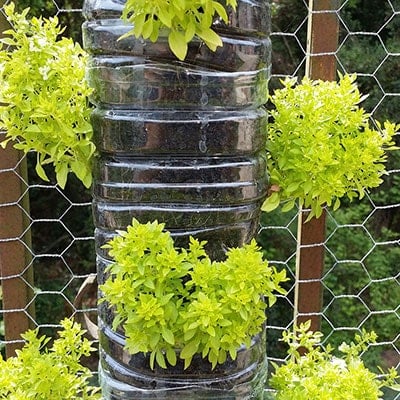
Traditionally the garden shed has simply functioned as a storage space for lawn and garden tools. However, people are finding new and inventive uses for their garden sheds ranging from outdoor entertainment spaces to home offices and art studios. One of the newest trends has been to turn the structure into an edible garden shed. One example of this trend is the Eathouse garden house that has living walls as well as a living roof. This combination garden shed and garden was constructed with metal pipes and crates stuffed with soil in which vegetables, herbs, and edible flowers are planted. This is great way to grow a wide range of healthy food in a relatively small space. While not everyone is making their shed into a literal garden like the Eathouse, the trend for many people is finding ways to grow a garden in a limited amount of space. One of the most obvious ways to accomplish this is by growing a vertical garden, which is ideal for those who live in the city or just for those who have very little outdoor garden space.

The edible living wall, sometimes referred to as green walls, is a growing trend in horticulture. Architects, building owners, designers, homeowners, and tenants alike are embracing this new planting method. This is a method that not only helps to green up living and working environments when horizontal space is at a premium, but the method lends well to growing edible plants and vegetables. The edible green walls provide health benefits associated with the plants themselves, but also allow people to have the freshest grown food available at their fingertips. While herbs are the most common plants that people grow indoors or outdoors in pots or in vertical spaces, more people are expanding the range of food they grow vertically. Some of the best vegetables to grow in pots or as vertical plantings include Patio or Cherry Tomatoes, Purple Beauty Bell Peppers, Bush Pickle Cucumbers, Cabbage, Lettuce, Endive, Mustard Greens, Sorrel, Spinach, Leek, Arugula, and Fruit (Strawberries and Blueberries).
When it comes to creating a living edible wall, there are a number of systems available on the market that will work on a similar basis to one another. These systems are generally modular in design, which means they can be adapted to fit just about any space no matter how small, wide, or tall. The modular systems are meant to be fixed either as a temporary or permanent wall installation. They are placed in front of an existing wall with a waterproof membrane between the wall and the modular structure. The structure often has planting pockets incorporated into the design to allow the addition of lightweight or open growing media. The structure may also provide space for the insertion of sheets of Grodan Rockwool, which is a hydro-cultural product. When choosing plants for the living wall it is best to consider using small plants when possible. Not only are they cheaper and easier to plant, but they are typically quicker to establish. Growing on an edible wall also provides the opportunity to stagger planting times and thus extend the harvest period further into the summer and fall.
Living walls will require regular watering whether they are on large or commercial walls or on smaller residential applications. While the larger installations may benefit from incorporating an irrigation system, the home living wall will typically be managed with manual watering. A conservation of runoff should be made in either instance, but with a smaller living wall a discrete evaporation tray may suffice. For those people who are already familiar with growing vegetables or herbs in pots or hanging baskets, migrating to a living wall will be an easy transition. However, for the new gardener with little experience, there are a wide variety of small scale planting products that can be used to learn the process. Some of the benefits of an edible wall or similar vertical allotment include:
- Accommodation of a range of salads, vegetables, root crops and even small fruits like strawberries and blueberries.
- The edible harvest can more easily be kept out of the reach of pets, unlike a traditional garden sprouting out of the ground.
- Vertical crops are less prone to damage from garden pests like slugs.
- Vertical crops are much easier to weed and tend
- Vertical crops generally require less water for irrigation in relation to ground grown plants.
- Vertical crops can benefit from radiating heat when they are installed on the side of a building or garden shed.
- Vertical gardens can be designed specifically for the space available.
Taking part in this new trend means that you will be growing your own produce that is not only more delicious, but also more nutritious. Start out with simple container gardening to grow fruits and vegetables and then expand to the living edible wall as you gain confidence as a gardener.




